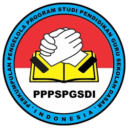Analisis Kesulitan Guru dalam Menerapkan Penilaian Autentik di Sekolah Dasar Negeri
DOI:
https://doi.org/10.35568/naturalistic.v6i1.1366Keywords:
Teacher, Authentic Assessment, SDAbstract
The purpose of this study is to describe the problem of teachers in applying authenticity at the 29 Pekanbaru State Elementary School. This type of research is descriptive qualitative research. The resource persons in this study were the principal and second grade teachers, fourth grade teachers and fifth grade teachers at the 29 Pekanbaru State Elementary School. Data collection techniques used are interviews, observation and documentation. The data analysis technique uses the Milles and Huberman model with stages, data reduction, data presentation, and drawing conclusions. The results showed that the Pekanbaru 29 Public Elementary School had assessed the authentic principle to assess student learning outcomes which included assessment, knowledge and skills. Attitude assessment uses direct observation techniques (observation) and self-assessment. Knowledge assessment in the form of written tests, assignments and questions in the Student Worksheet (LKS). Skills assessment using practice/performance techniques and products. The obstacles experienced by teachers in implementing authentic assessment are the use of assessment techniques on student attitudes, the use of written test techniques and assignments on knowledge competencies and the use of product techniques on skills.
Downloads
References
Kunandar. 2015. Penilaian Autentik (Penilaian Hasil Belajar Peserta Didik Berdasarkan Kurikulum 2013. Jakarta:Raja Grafindo Persada.
Larasanty, N. K. Puspa Indah.2020. “Meningkatkan Kompetensi Pengetahuan IPA Dengan Menggunakan Model Pembelajaran Predict Observe Explain Berbasis Berpikir Kreatif.” Mimbar Ilmu 25, no. Vol 25, No 3: 391–400.
Maruti, Endang Sri, and Naniek Kusumawati. 2018. “Proses Pengembangan Asesmen Alternatif Berupa Penilaian Produk Pada Mata Kuliah Pembelajaran Bahasa Jawa Di Sd.” JURNAL PENDIDIKAN DASAR PERKHASA: Jurnal Penelitian Pendidikan Dasar 4, no. 2 : 189–99.
Nurjanah, and Noni Marlianingsih. 2015. “Analisis Butir Soal Pilihan Ganda Dari Aspek Kebahasaan.” Faktor Jurnal Ilmu Kependidikan 2, no. 1 : 69-78.
Ruslan, Tati Fauziah, and Tuti Alawiyah. 2016. “Kendala Guru Dalam Menerapkan Penilaian Autentik Di SD Kabupaten Pidie.” Jurnal Ilmiah Mahasiswa Pendidikan Guru Sekolah Dasar 1, no. 1 : 147–57.
Sd, D I, and Negeri Banda. 2016. “Kendala-Kendala Yang Dihadapi Guru Dalam Memanfaatkan Media Berbasis Komputer Di Sd Negeri 10 Banda Aceh.” Jurnal Pesona Dasar 2, no. 4 : 21–30.
Sutarna, Nana. 2016. “Penerapan Metode Penugasan Untuk Meningkatkan Kemampuan Memahami Peta Pada Siswa Sekolah Dasar.” Jurnal Geografi Gea 16, no. 1: 34.
Trianto Ibnu Badar at-Taubany Hadi Suseno. 2017. Desain Pengembangan Kurikulum 2013 Di Madrasah. Depok : PT Kharisma Putra Utama.
Warsono. 2017. “Guru: Antara Pendidik, Profesi, Dan Aktor Sosial.” The Journal of Society & Media 1, no. 1 : 1.
Yohana Herlina Mbindi, I Made Sutama, Gede Gunatama. 2013. “Penilaian Kompetensi Sikap Dalam Pembelajaran Bahasa Indonesia Berdasarkan Kurikulum 2013 Di Kelas X Smk Ti Bali Global Singaraja.” Journal Jurusan Pendidikan Bahasa Dan Sastra Indonesia 7, no. 2 : 2.
Yuyun Dwi Haryanti, Sapriya, Tegar Pamubdhi. 2021. “Jurnal Cakrawala Pendas PENGEMBANGAN MODEL PENILAIAN AUTENTIK PADA Abstrak Pendahuluan Kurikulum Yang Berlaku Saat Ini Di Indonesia Adalah Kurikulum 2013 Atau Dengan Sebutan Menggunakan Pengetahuan , Menampilkan Sikap , Dan Keterampilan Yang Diperoleh Mel” 7, no. 1 : 27–39.
Downloads
Published
How to Cite
Issue
Section
License
Copyright (c) 2021 NATURALISTIC : Jurnal Kajian Penelitian Pendidikan dan Pembelajaran

This work is licensed under a Creative Commons Attribution-ShareAlike 4.0 International License.
Copyright of Journal Naturalistic : Jurnal Kajian Penelitian Pendidikan dan Pembelajaran (e-ISSN:2548-8589, p-ISSN:2528-2921).
Open Access Policy
This journal provides immediate open access to its content on the principle that making research freely available to the public supports a greater global exchange of knowledge.
This journal is open access journal which means that all content is freely available without charge to users or / institution. Users are allowed to read, download, copy, distribute, print, search, or link to full text articles in this journal without asking prior permission from the publisher or author. This is in accordance with Budapest Open Access Initiative.






